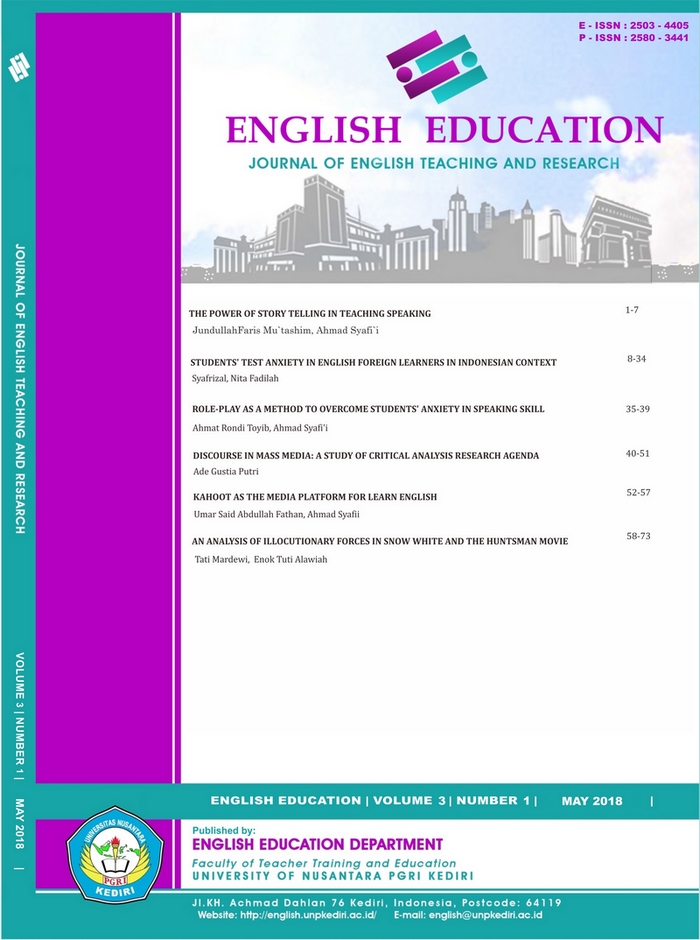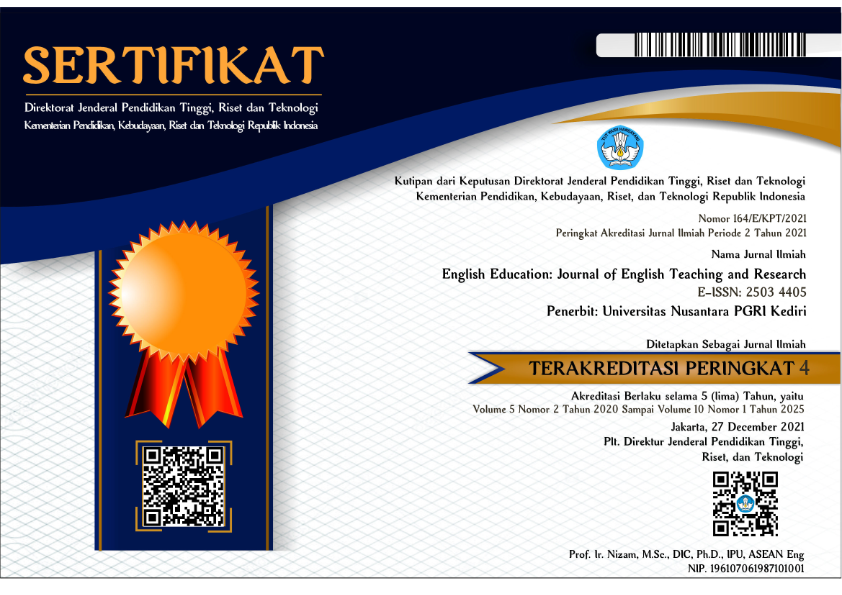KAHOOT AS THE MEDIA PLATFORM FOR LEARN ENGLISH
DOI:
https://doi.org/10.29407/jetar.v3i1.11754Abstract
Nowadays, we lived in virtue era that everything will use glass or screen. Every student also will follow the era. Most of the students are holding the gadget wherever they go. Nairn in Joanna Canny (2013) states that children spend twice as much time in front of a screen (like televisions, computers, mobile phones, iPods, iPads, etc.). Even in the classroom they looking for their task and open their gadget. In this case, English Language Teacher should follow the era. Caused the students always hold the gadget, the teachers should provide the media that related to the gadget. To solve this case kahoot comes and bring new innovation. This media really awesome with nice features which are colorful, shape, sound, and others feature that include in. Through this media, the teacher will manage the students with a fun learning like kahoots’ tagline “make learning awesome”. It will give the students attractive in learning English.
Keywords: Media platform, Kahoot, English Language Teacher
Downloads
Downloads
Published
Issue
Section
License
Authors who publish with this journal agree to the following terms:
- Copyright on any article is retained by the author(s).
- The author grants the journal, the right of first publication with the work simultaneously licensed under a Creative Commons Attribution License that allows others to share the work with an acknowledgment of the work’s authorship and initial publication in this journal.
- Authors are able to enter into separate, additional contractual arrangements for the non-exclusive distribution of the journal’s published version of the work (e.g., post it to an institutional repository or publish it in a book), with an acknowledgment of its initial publication in this journal.
- Authors are permitted and encouraged to post their work online (e.g., in institutional repositories or on their website) prior to and during the submission process, as it can lead to productive exchanges, as well as earlier and greater citation of published work.
- The article and any associated published material is distributed under the Creative Commons Attribution-ShareAlike 4.0 International License








 Article template
Article template



